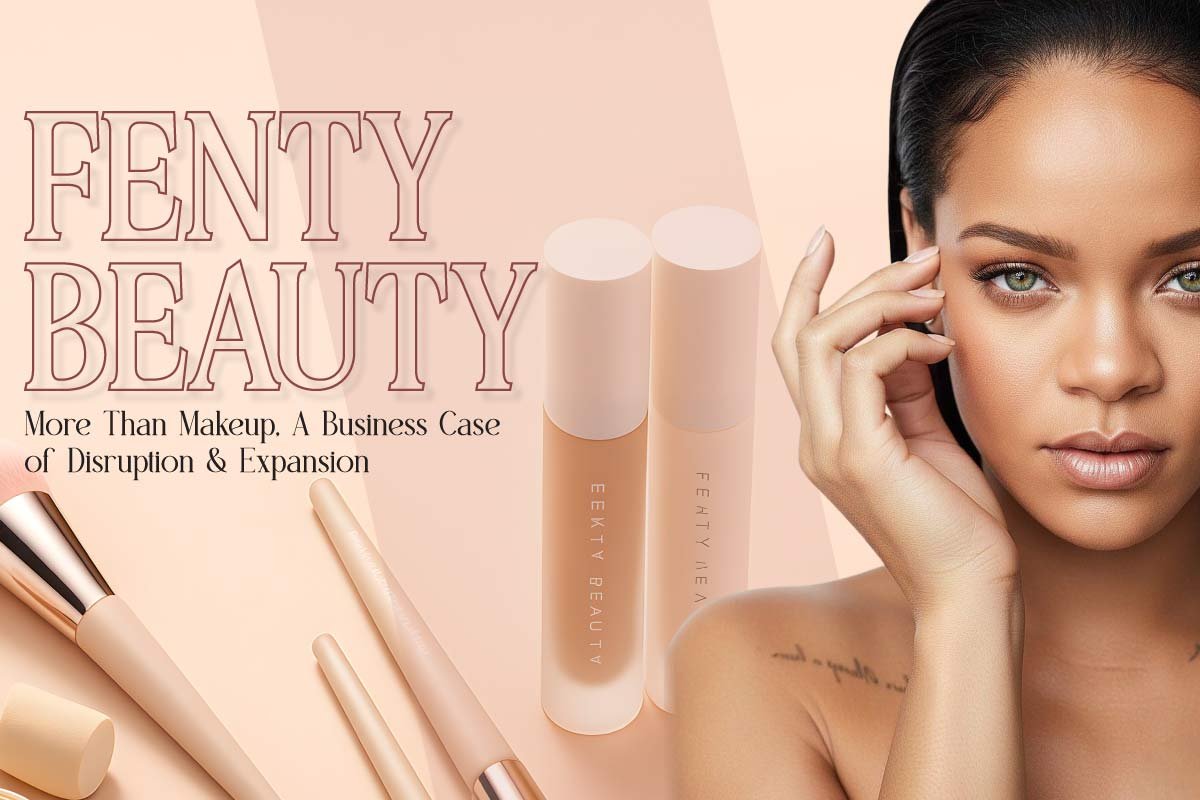Luxury fashion is the language of poise and urbanity. We all dream of owning luxury items. It’s more than the status quo, it is associated with the notion of freedom and happiness. Owing products from brands like Gucci, Chanel, and Hermes bring richness and satisfaction. But have you ever wondered how these brands have made their name?
In this article, we will dive into the story of a brand that is synonymous with timeless elegance, class, and sophistication – Chanel. From its iconic logo to the timeless beauty of the ‘little black dress’, it has revolutionized fashion for women since its inception, and we can thank Gabrielle Bonheur “Coco” Chanel for it.
“Fashion is not something that exists in dresses only. Fashion is in the sky, in the street, fashion has to do with ideas, the way we live, what is happening.”
Coco Chanel
The Life of Gabrielle Bonheur “Coco” Chanel
The brand name ‘Chanel’ signifies class and prosperity, yet, Gabrielle Bonheur Chanel was born in poverty and grew to be an influential fashion designer. Before establishing the iconic brand, Gabrielle opened her first store in Paris. Initially, it was a hat store called ‘Chanel Modes’. The store quickly gained popularity among glamorous European actresses who admired and imitated Coco Chanel’s simple and elegant style.

Gabrielle revolutionized fashion in her era and made women’s clothing more breathable and comfortable. In 1913, she opened her second boutique in Deauville, a seaside resort in Normandy. This time, she added a collection of jersey ‘sportswear’ to her range of products. These clothes offered women a fresh and exciting way to showcase and embrace their bodies. The collection became an instant success, and her popularity spread throughout the country.
The Rise of the Iconic Chanel
In 1918, the well-known Chanel store at 21 Rue Cambon opened its doors. This location has continued to serve as the headquarters for the Chanel brand up until the present day. In 1924, Gabrielle launched her first line of cosmetics, which included face powders and lip colors. Around the same time, she founded the Societe des Parfums Chanel to make the most of the brand’s expanding beauty and fragrance business. In that same year, she introduced her iconic tweed suits. She discovered the fabric during her trips to Scotland with the Duke of Westminster. Tweed was traditionally associated with men’s clothing, but she gave it a feminine touch, creating a new, modern uniform for women.

1927 witnessed the brand’s first launch of a skincare line, offering 15 products aimed at helping women gain the perfect complexion. In 1945, after enjoying great success and having 4,000 employees and multiple boutiques across France, Gabrielle faced challenges during World War II. Due to the war, the house had to close all of its boutiques except for the one at 21 Rue Cambon. Despite the difficult times and the war effort, its fragrances and accessories remained popular, especially among American soldiers who bought them as gifts to send back home. In 1954, she relaunched the couture house along with updated designs and some new product launches.
On 10 January 1971, Gabrielle took her last breath at the age of 87. Many known people mourne for her. In 1978, the brand introduced a ready-to-wear collection for the first time. This meant that their collection and accessories could now be sold globally, much to the delight of their fans.
A New Era
In 1983, Karl Lagerfeld was named as the new artistic director of Chanel. He took charge of designing all the high-end couture, ready-to-wear, and accessory collections. Karl was already famous for his innovative work at Fendi, and he continued to work there as well. He brought his own unique style and energy to the brand, which had been struggling to find a clear direction after the passing of Gabrielle. He wasted no time in revamping the ready-to-wear collection and also transformed the interlocking ‘CC’ logo into an iconic symbol of the brand. His contributions breathed new life into the brand and helped it regain its status as a fashion powerhouse.
He took the brand to next level, until 2019 when he died from pancreatic cancer. Currently, French billionaire brothers Gérard Wertheimer and Alain Wertheimer own the brand. They continue to keep the brand alive and live up to its name of elegance and sophistication.
Chanel’s Iconic Products Throughout History
1. Jersey
Gabrielle revolutionized French fashion by utilizing jersey fabric, originally used for men’s innerwear and sportswear. With its fluidity and flexibility, she saw its potential for creating sleek and comfortable garments. This innovative approach quickly made Jersey a popular choice in the world of high fashion. One remarkable example is the 1916 belted blouse, crafted from a fine silk jersey. By November 1916, her mastery of working with jersey was recognized by American and British Vogue, solidifying her status as a fashion icon.
2. The Little Black Dress
Gabrielle introduced black as a fashionable and versatile choice for women’s clothing in the late 1910s. Despite its association with service roles and mourning attire, she saw black as a symbol of modernity and elegance. Her black day dress gained global recognition in 1926, known as the ‘little black dress’ or LBD. It became a sensation for its ability to transition effortlessly from day to evening wear, a groundbreaking concept at a time when women changed outfits multiple times a day. Throughout her career, she continued to incorporate black into her designs, often emphasizing the silhouette and minimizing decoration.
3. CHANEL N°5

Since its launch in 1921, CHANEL N°5 has been the most important perfume for Chanel. Created by Gabrielle herself, it became the iconic scent of the fashion house. Crafted by perfumer Ernest Beaux, N°5 was a unique fragrance made from over 80 ingredients like jasmine, ylang-ylang, sandalwood, May rose, and neroli. She handpicked it from ten samples, choosing the number five because it was her favorite number. N°5 quickly became the world’s best-selling fragrance and continues to be popular today, thanks to its modern and timeless appeal. Renowned figures such as the Queen and Marilyn Monroe were fans of N°5.
4. The Tweed Suit
The Chanel Tweed Suit is one of the most famous designs and a symbol of Gabrielle’s fashion legacy after the war. In the 1920s, she transformed tweed suits from being seen as sporty or outdoor wear into fashionable daywear. However, it was after her return to fashion in 1954 that the suit became strongly associated with the brand. Designed to be elegant and comfortable, the suit allowed easy movement with its soft fabrics and cardigan-like jacket cut. It quickly became a popular choice for influential women in the 1950s and 60s. Celebrities like Princess Grace of Monaco, Elizabeth Taylor, Jacqueline Kennedy, and Marlene Dietrich were regular buyers of these suits.
5. The 2.55 Handbag
Gabrielle believed that accessories were essential in achieving a balanced and stylish look. These accessories not only demonstrated her practical approach to fashion but also showcased distinct features that embodied her unique style. Among her most coveted accessories was the 2.55 handbag, named after its creation in February 1955. This iconic piece quickly became a sought-after classic. Crafted in various sizes and materials such as lambskin, jersey, or silk satin, the handbag boasted a front flap with a rectangular lock and adjustable metal straps, offering versatility to be carried by hand or over the shoulder.
6. Two-tone Shoe
In 1962, Gabrielle asked a shoemaker called Massaro to create the perfect Chanel shoe. She always designed shoes that she liked to wear herself. She chose a beige-colored leather that matched her skin tone, making her legs look longer. There was a small black part on the front of the shoe that added a nice touch and protected the lighter leather from getting scratched. The shoe had an elastic strap and a low heel, so it was comfortable to wear and easy to walk in.
Back then, it was common for fancy clients to order special shoes from their own shoemakers to go with each outfit. But she believed in simplicity. She wore her beige and black two-tone slingbacks with everything.
7. Costume Jewelry
One of Gabrielle’s signature styles was using imitation pearls in her designs. She incorporated them into necklaces, brooches, and even as buttons on suits. In fact, she was credited with popularizing artificial pearls in the fashion world in 1931. Her boutiques offered a wide range of costume jewelry options to complement her clothing designs starting from the early 1920s. Her jewelry collections often featured motifs like flowers, wheatsheaves, stars, and the sun, which became synonymous with the brand’s style. The lion’s head, representing her zodiac sign Leo, was also a common design element in her jewelry pieces.
Marketing Strategies of Chanel
- Chanel’s team created a special image for the brand that appeals to their target customers and makes them stand out from other brands. For example, its famous “C” logo and quilted handbag design are now associated with high-end fashion and luxury. They also make sure to use top-quality materials and pay close attention to detail in all their products, which adds to the idea of luxury.
- Chanel uses famous people to endorse their brand, hosts exclusive events, and partners with prestigious institutions like art museums. This makes people see it as a symbol of elegance and luxury. It also creates a feeling of exclusivity, attracting customers who want to be part of these special experiences.
- It uses storytelling and brand identity to connect with its customers and create a strong relationship with them. They tell stories through their advertisements, using images and messages that appeal to people’s desires and dreams. It also collaborates with famous artists, photographers, and filmmakers to create short films and installations that bring their collections to life in unique and captivating ways.
- The brand loves working with artists and putting on fashion shows to show off its new collections and ideas. These shows are held in fancy places like the Grand Palais in Paris, and they get a lot of attention from people all over the world.
Current Market Value
In 2023, Chanel’s brand value worldwide was around $19.4 billion, which was higher than the previous year. The brand value of Chanel has been increasing positively between 2017 and 2023, with a growth of 27 percent in the most recent period.


















